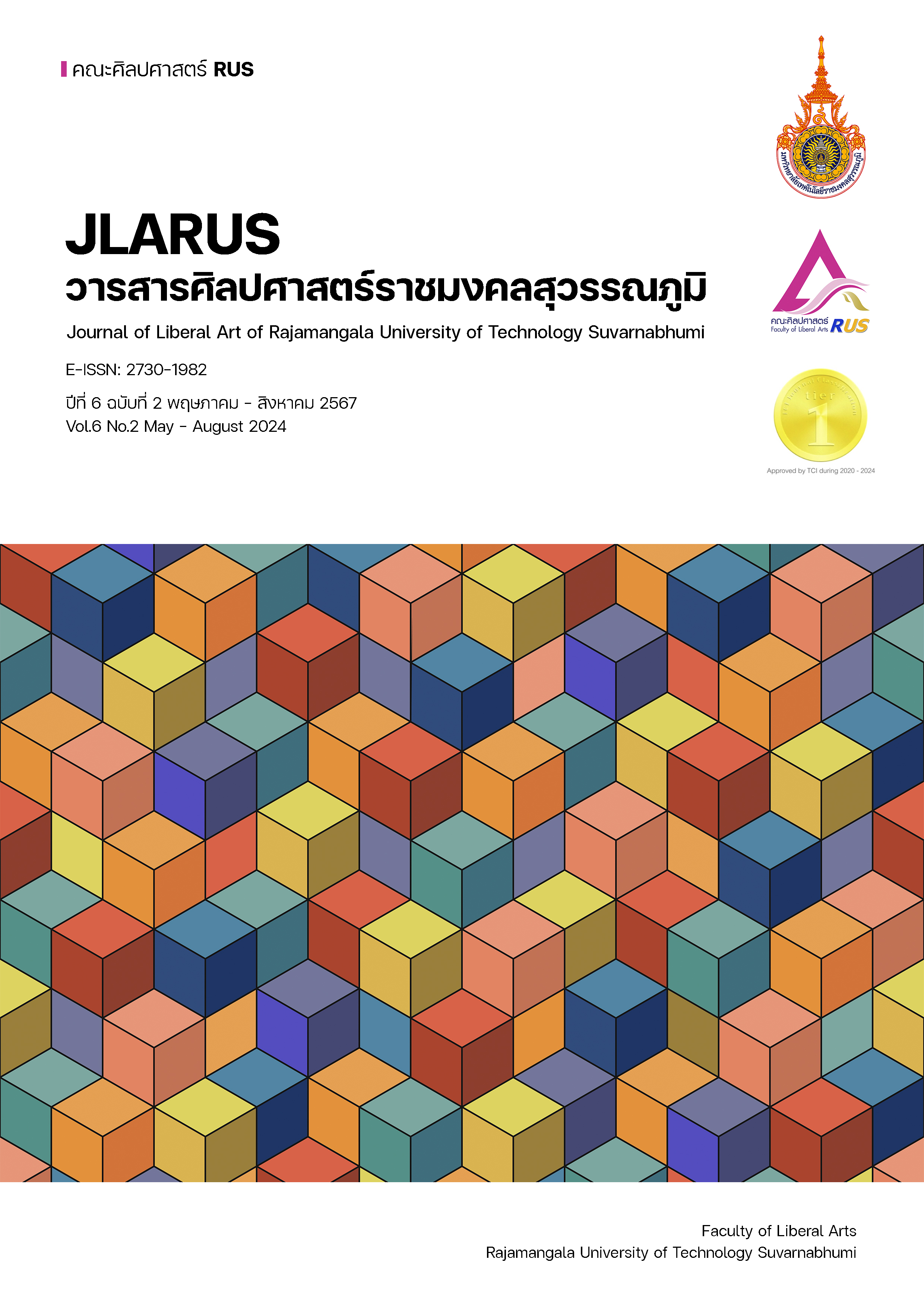INSTRUCTIONAL DESIGN USING THE CONSTRUCTIVISM THEORY AND PROBLEM-BASED LEARNING APPROACH TO ENHANCE THE CHINESE READING AND WRITING ABILITIES OF PRIMARY SCHOOL STUDENTS IN CHINA
Main Article Content
Abstract
The purposes of this research were 1) to study the current state and problems in teaching Chinese reading and writing abilities of primary school students in China, and 2) to draft an instructional model using the Constructivism Theory and a problem-based learning approach to enhance the Chinese reading and writing abilities of primary school students in China. This study was divided into 2 phases. In Phase 1, qualitative methods were employed to analyze various sources from 2019 to 2023, including documents, books, journals, and websites. Semi-structured interviews were conducted with 5 curriculum experts, 10 experienced Chinese teachers, and 9 primary school students, selected through purposive sampling. Phase 2 involved prioritizing solutions based on the findings from Phase 1, leading to the draft of the instructional model, which was then evaluated by 5 experts for content validity (IOC) and by 10 Chinese language teachers and 1 research assistant for appropriateness using a five-level rating scale. The research results provided:
1) In Phase 1, the study of the current state and problems in teaching Chinese reading and writing skills to primary school students in China found that problems include low student engagement, traditional teaching methods, curriculum misalignment, lack of diverse materials, and assessment limitations. Recommendations advocate for student-centered approaches, diverse learning methods, curriculum alignment, enriched materials, individualized instruction, varied assessments, active learning, and inclusive environments.
2) In Phase 2, the analysis revealed IOC values over 0.8 for all topics by experts, alongside highest-level appropriateness assessments by teachers and a research assistant. Following the receipt of suggestions, a teaching model was developed comprising six steps: 1) Problem Introduction and Stimulating Interest, 2) Creating a Context for Self-Directed Learning, 3) Task-Driven and Cooperative Learning, 4) Communication, Reporting, and Guiding, 5) Integrating Reading and Writing for Free Expression, and 6) Evaluation, Feedback, Summary, and Improvement.
Article Details

This work is licensed under a Creative Commons Attribution-NonCommercial-NoDerivatives 4.0 International License.
References
Brooks, J. G., & Brooks, M. G. (1999). In search of understanding: The case for constructivist classrooms. Alexandria, VA: Association for Supervision and Curriculum Development.
Ertmer, P. A., & Newby, T. J. (2013). Behaviorism, cognitivism, constructivism: Comparing critical features from an instructional design perspective. Performance Improvement Quarterly, 26(2), 43-71.
Hmelo-Silver, C. E. (2004). Problem-based learning: What and how do students learn?. Educational Psychology Review, 16(3), 235-266.
Kaufman, D. (2004). Constructivist issues in language learning and teaching. Annual Review of Applied Linguistics, 24(1), 303-319.
Li, N. (2023). Research on the Design of Primary School Chinese Language Teaching Based on Case Analysis. Frontier of Modern Education, 4(4), 28-30.
Loyens, S. M., & Gijbels, D. (2008). Understanding the effects of constructivist learning environments: Introducing a multi-directional approach. Instructional Science, 36(5-6), 351-357. https://doi.org/10.1007/s11251-008-9059-4.
Luo, J., & Huang, T. (2015). Exploring the effects of constructivist learning environment on students' reading comprehension of Chinese language. International Journal of Emerging Technologies in Learning, 10(4), 38-44.
Ma, D., & Zhang, Z. (2018). A Study on the Problems and Countermeasures of Chinese Literacy Teaching in Primary Schools. Western China Quality Education, 4(13), 216-217.
Piaget, J. (1973). To understand is to invent: The future of education. New York: Grossman.
Savery, J. R. (2015). Overview of problem-based learning: Definitions and distinctions. In A. Walker, H. Leary, C. E. Hmelo-Silver, & P. A. Ertmer (Eds.), Essential readings in problem-based learning: Exploring and extending the legacy of Howard S. Barrows (pp. 5-15). Indiana: Purdue University Press.
Snow, C. E., Burns, M. S., & Griffin, P. (1998). Preventing reading difficulties in young children. Washington, DC: National Academy Press.
Seh, M. (2022). The Impact of the Constructivist Teaching Model in Enhancing Reading Skills. PUPIL: International Journal of Teaching, Education and Learning, 6(1), 342-358.
Vygotsky, L. S. (1978). Mind in society. Cambridge, MA: Harvard University Press.
Wei, Z. (2021). Research on the Application of the Reading and Writing Integration Model in Primary School Chinese Reading Teaching. Innovation and Practice of Teaching Methods, 4(1), 99.
Williams, M., & Burden, R. L. (1997). Psychology for language teachers: A social constructivist approach. Cambridge, England: Cambridge University Press.
Zhang, Y. (2010). An investigation of constructivist instructional approach on improving Chinese writing in a Singapore primary school. The NIE Researcher, 2(1), 32-40.


